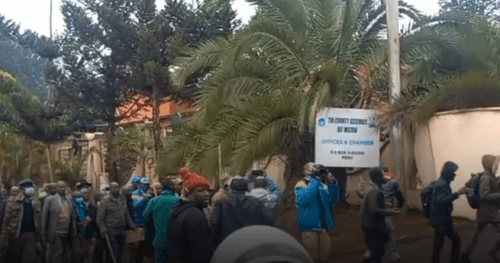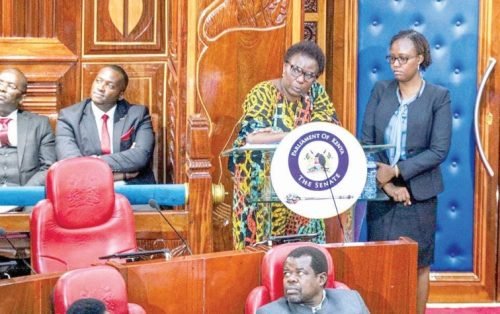- Details
- East Africa
- 600
Chaos and disruptions have rocked the Meru County Assembly ahead of today’s debate on the fifth ouster motion against Governor Kawira Mwangaza.
Some pro-Mwangaza officials clashed with their counterparts who were supporting the impeachment motion outside the Meru County Assembly.
From several videos, the officials were recorded engaging each other in a conversation before turning into pull-and-push altercations.
By the time of this publication, the reason for their confrontation was not immediately established.

In the second instance, Njuri Ncheke leaders clashed with a section of supporters who had pitched camp outside the Meru County Assembly.
Both groups clashed demanding to access the county assembly.
Police Presence
Earlier on Thursday, August 8, 2024, heavy security was deployed at Meru County assembly premises and its environs.

Nkuene MCA Martin Makazi and his nominated counterpart Kiriinya Mwenda condemned the incident accusing the county boss of using chaos to disrupt a constitutional procedure.
“We have not slept the hired goons surrounded the assembly from 11:00 pm till dawn. They wanted to set the assembly on fire we thank God the police acted swiftly and rescued the situation and also the fire extinguishers contained the fire,” Kiriinya said.
Impeachment motion
Political wrangling in Meru has turned into a vicious circle of conflict after a county assembly member tabled the fifth impeachment motion against Governor Mwangaza a day after withdrawing the fourth.

Nominated MCA Zipporah Kinya tabled another impeachment motion triggering a fresh process to remove Mwangaza, two days after the governor was granted a reprieve by the courts.
In the new motion, Kinya wants the Meru governor removed from office for gross violation of the Constitution and other laws, gross misconduct and abuse of office.
“The governor’s continued stay in office has persistently undermined effective and efficient service delivery and gravely hurt the interests of the people of the county,” Kinya argued. By Lutta Njomo, People Daily






